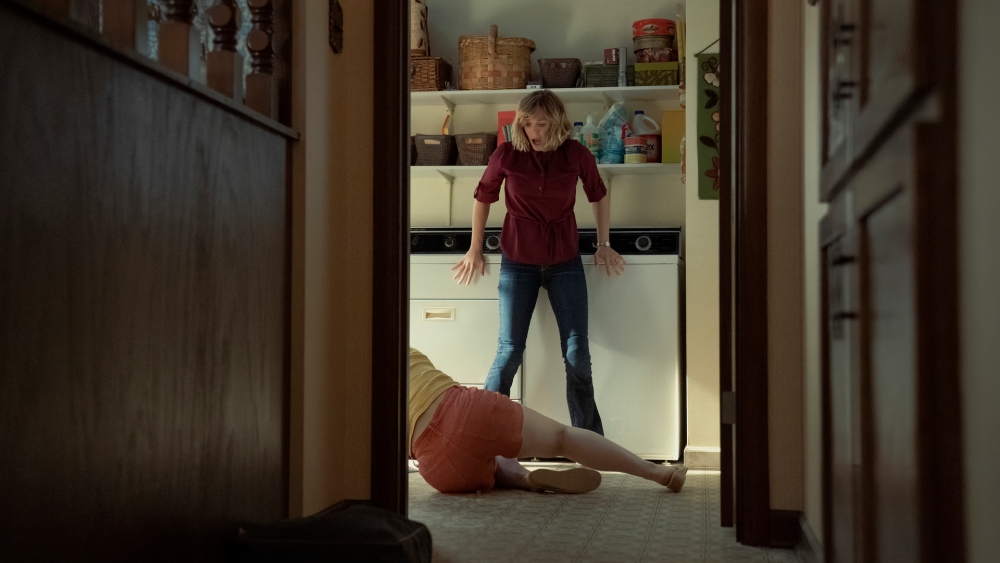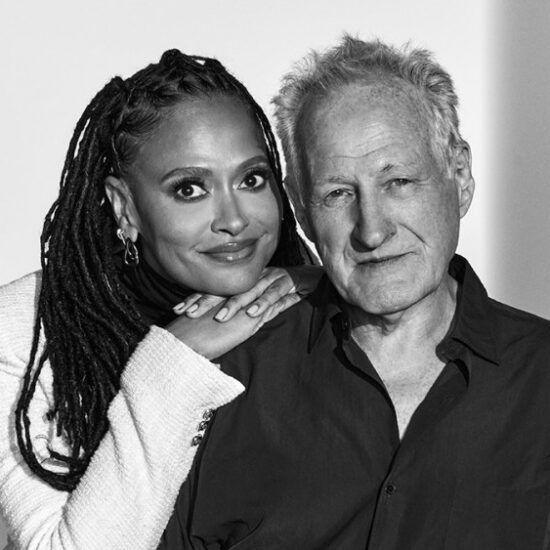
Hollywood stalwart Lesli Linka Glatter has directed countless hours of harrowing, often grisly, television. “I’ve done a lot of action. I have blown up a lot of shit. I have killed characters in horrifying ways,” Glatter says, summoning her decades of experience lensing some of TV’s most violent moments on series ranging from “Homeland” to “The Walking Dead.”
And yet, Glatter says filming the confrontation between Elizabeth Olsen and Lily Rabe, playing churchgoing housewives from HBO Max’s “Love & Death,” was the most intense experience she’s ever had on set. “This scene with two women, inside a laundry room, was the most profoundly upsetting thing I’ve ever directed.”
The scene is the culmination of the seven-episode miniseries following the true crime tale of Candy Montgomery (Olsen), who slaughtered her friend Betty Gore (Rabe), striking her 41 times with an axe. During a confrontation about Montgomery’s affair with Gore’s husband, the two engage in a physical altercation inside the laundry room that ends in the massacre of Gore while her infant child napped in the other room. The story, and subsequent trial, became a national tabloid sensation in the early 1980s, which series creator David E. Kelley used to frame this terrifying moment.
The crew relied on court transcripts to recreate what possibly occurred that afternoon in the small town of Wylie, Texas. “We’re telling what happened that fateful day completely through Candy’s point of view,” Glatter warns. “And of course, the reason for that is only one person survived that very terrifying encounter.”
The transcripts became the blueprints that set the scene. “Every detail from ringing the doorbell to being let inside the home. These are the things she said to police that she saw,” says Olsen. “What was on television, the color of the thing that [Gore] was sewing, packing for a trip, these are all just facts that were said.”
Even the props were assembled from official documents describing what was found in the laundry room: a dog bowl, a child’s toilet and a book of Mother Goose rhymes — “the most mundane things,” as Glatter describes them.
That banality of suburban life juxtaposed with a heinous act was a major underlying theme of “Love & Death.”
“This is a story about the kind of hole in one’s heart and psyche and spirit that many women of that time experienced,” Glatter explains. “They did everything right. They got married young. They had the kids. They lived in the nice community. Why do you feel so empty inside?”
Working with their stunt coordinator and stunt doubles, they mapped out the choreography of the fight based on the clippings and physical lacerations. “The way Lesli works is we go to set, it’s a closed set, unless it’s the camera operator and the DP, and we rehearse, and we run through everything,” explains Olsen.
“I felt it was my job to try to create the safest environment possible,” Glatter says. “We choreographed the scene ahead of time. Then I story-boarded it so everyone on the crew would know exactly what we were doing. We knew exactly where we would get to at the end of day one.”
The director even extended the ability to call “cut” to anyone in the room, “whether it was the cameraman, whether it was Lily or Lizzie, anyone who was in that space as part of this scene. If something was happening, say cut. I wanted everyone to know that that was a possibility because the most important thing was everyone felt that they were in a safe place doing a very unsafe scene.”
However, there were no precautions, rehearsals or conversations that could prepare anyone for the emotional toll of this moment paired with the physicality of the scene. Embodying this horrific act with painstaking accuracy left everyone fairly shaken. Rabe, who has played countless tortured souls for years, dubbed it “one of the most painful scenes that I’ve shot in my career.”
“I really could barely brush my teeth,” says Rabe. “I couldn’t shake the scene until it was over. I couldn’t let go of it. It felt a bit like pulling a rubber band as tight as you can and holding it right at the point before it’s going to snap until it does, and you can’t let go. And I was very pregnant at the time.”
Rabe’s pregnancy was a concern for Olsen, who spent much of this scene pummeling her with the prop axe. In one moment, Olsen had to call in her stunt double to step in while shooting Rabe’s coverage. “Lily really wanted me to make harder contact with this rubber ax on her arms,” says Olsen. “I really didn’t feel comfortable doing that, because she had a 6-month-old child inside her, and I knew that she needed something from me that I didn’t feel safe doing… You want to be off camera for your actors, but she needed something physical, and I did not feel safe or comfortable being that person.”
The conversation about the mental health of everyone involved in this shoot remained a major priority and the entire cast and crew often found themselves pausing to check in with one another.
“There was a wonderful feeling of trust and communication and checking in and even sometimes silently just reaching over and squeezing a hand between takes,” says Rabe. “Just to sort of say, ‘I’m here. I’m here.’”
Glatter adds: “I can tell you when these two incredible actors started inhabiting that scene, I thought my heart was going to explode, it was so upsetting. At the end of each day, we just held each other.
“David E. Kelley watched the dailies, and he called me up and said, ‘Are you OK?’ And the answer was, ‘Nah, not really. This was hard.’ But we wanted to try to be as truthful as we could to the facts of the story as we know them.”
Variety’s “Making a Scene” is presented by HBO. Watch all of our episodes here.













